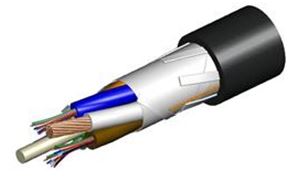Among telecoms operators grappling with the concept of private industrial networks, and ways to coexist with enterprises seeking control of their own LTE and 5G infrastructure, Telefónica cuts an assured figure. It has been developing its strategy around private networks for 18 months at least, and deploying them in earnest across its operating markets in Europe and Latin America for the last 12.
Its strategy and position looks pragmatic, and confident even.
“Private LTE is something we nurtured in 2018 and are making a reality this year. That concept of the connected factory through a combination of private LTE and our public network is a reality – something we are selling to mines, ports, airports, factories, and plants all over Latin America and also in Europe,” says Andrés Padilla Fuentes, director of new IoT business at Telefónica, speaking with Enterprise IoT Insights at MWC 2019 last month (see also video interview at bottom of page).
Telefónica’s approach to spectrum for private networks is pragmatic, and three pronged: it will make use of its existing holdings where it can, and buy new spectrum on spec or run in unlicensed where it can’t. “This market is still shaping,” says Padilla. “We will combine different restrictions, opportunities, necessities.”
It is a position arrived at over time. Twelve months ago, at the 2018 edition of the same Barcelona show, Telefónica combined with its compatriots in the automotive market, in the form of car brand SEAT and car-parts maker Ficosa, to show a private networking setup for a supply-chain and manufacturing concept.
The demo recreated a chain-of-supply in the automotive sector, from the dispatch of rear-view mirrors from Ficosa plants in Spain, through to their handling by robots on the production line in SEAT’s factories in Spain, and the final purchase of the cars themselves in international markets.

As a concept, it looked complete: a multi-part industrial IoT system, integrated end-to-end, which made use of private and public networks inside and outside factories, respectively, along with sensors and platforms, analytics and artificial intelligence (AI), robotics and automation, and blockchain – technologies that have hogged the industrial-change narrative in the period since, including at this year’s Barcelona show.
But Telefónica has not made such a blatant show of IoT systems and private networks at MWC this year. Instead, IoT is in the background, informing just about everything else, explains Padilla, whether it is in the plumbing of its Aura AI system, or in the bones of its connected car demo on the Barcelona streets with Ericsson and Qualcomm. Padilla gives his personal take, as the man in charge of the Spanish firm’s IoT activities.
“We are present across everything. Whenever there’s a network evolution, we are either the driving force behind it, or else the main beneficiary – because we’re at the core of the network. Everything about virtualisation, edge computing, and so on is also about IoT.”
Padilla is happy to talk about private networks; he has just come out of an analyst briefing, he jokes, where that’s all he was asked about. The point is Telefónica will change its recipe on private networks as use cases require. It will mix in licensed and unlicensed spectrum and dovetail with its public infrastructure according to its local footprint and the job specs.
“In the case of Chile, Peru, Colombia, there is a lot of money in mining, often coming from multinationals headquartered in Europe, and operating in Latin America. That’s a perfect fit for us, of course,” says Padilla.
“In the case of Europe, we are seeing demand either in manufacturing plants, many in the car industry – just because the car industry is already very well aware of mobile connectivity and is starting to apply it in its production and processes – and also in those countries with more, I would say, commercial activity, really, in ports and airports.”
Is the demand for private LTE in Europe more or less equal across its footprint in the region, in its home market in Spain, alongside Germany and the UK. Yes, he says; there is demand in each territory – although Germany, the original home of Industrie 4.0, is perhaps keenest. “In Germany, of course; there are so many manufacturing plants for cars”.
He goes on: “The beauty of private LTE is it allows us also to get in areas where we might not be so strong as a carrier.” There are two aspects to this, of course – geographic areas it has failed to serve, and market segments it has struggled to cover.
But private networks, even running in unlicensed spectrum, as required, are only a part of the solution for enterprises, says Telefónica. Public infrastructure has to come to the edge of these dedicated networks, as a “complement” to them, to make the whole chain of industry pull together.
“Everything inside of the factory or port has to get in and out, so we are combining both. So while you’re in this connected industry space, you have the very best in terms of dedicated infrastructure – from the access [network], and part of the core. But once you step outside, it still works – with the same SIM, under the same platform. You don’t have to do anything,” explains Padilla.
But the network arrangement is just a gateway discussion for telecoms in industry. The real sustenance for operators comes in the management of the infrastructure, and it’s no mean feat to run a ‘carrier-grade’ network, both securely and reliably, says Telefónica.
“It’s one thing to decide private LTE makes sense, but it needs to be operated and updated, and the vendors have to be managed – and of that is normal activity for us. So we are good at bringing that value to our customers.”
What about the role of unlicensed spectrum? In general, industrial sectors are too varied and industrial use cases are too fragmented for an easy rule-of-thumb. The only way is to take each case on its own merits, says Padilla. The application, infrastructure, and regulatory conditions in each industrial zone must be considered, he says.
“Our priority is to use our own spectrum – not just because we have it, but because it is the most adequate in terms of the available devices, its properties, the capabilities it supports.”
But Telefónica has a couple of other options. “We have also purchased specific spectrum in some countries for some use cases – just because it makes sense, and it is not that expensive. And there are also examples where we have used totally unlicensed spectrum. But that is like the last option, which we only do if necessary.”
Padilla is reticent to share examples, but Telefónica has picked up bits and pieces of spectrum in Europe for these ends, and is “analysing” the same in Latin America. “In many countries, there are parts of the spectrum that anyone can buy for a specific space, for a specific use case. There is no big issue.”
LTE-based technologies, covering the gamut from low-power LTE-M and NB-IoT through to advanced wide-band 4G and 5G, will serve most industrial use cases, reckons Padilla. “Almost all those technologies will come through LTE plus some combination of short range connectivities outside of LTE,” he says.
At the same time, a serious-minded digital change agent cannot be determinedly precious about how it deploys and combines mobile networks. This so-called ‘fourth industrial revolution’ will be sprung by a range of connectivity types, but the bounce, where the change is revealed and the money is made, will only come from the intelligence, automation, and control they enable.
Operators cannot be hung up on licensed spectrum, entirely, and Telefónica’s approach is pragmatic. It has developed its narrative over 18 months, says Padilla, and knows it cannot go it alone. “We are adding concepts we’ve learned in other verticals,” he says.
He cites a couple of partnerships in evidence. Telefónica has a deal with mobile robotics firm ASTI, a maker of autonomous guided vehicles (AGVs) for transporting industrial goods around factories and warehouses using cellular vehicle-to-everything (C-V2X) connectivity. “AGVs are one of the fastest consumers of pre-5G capabilities.”
It also has an arrangement with Geprom Connecting Industries, a platform provider to the automotive, food, chemical, pharmaceutical, logistics and energy sectors. “There is a gap in the middle – between your connected workbench and your enterprise resource system – for a platform, which allows you to connect both.”
It is leveraging these industrial resources, from the likes of ASTI and Geprom, to tune the bounce from its connectivity springboard – which is privately managed and variously constructed. “We don’t want to stay at the infrastructure and connectivity level. We are bringing value propositions beyond connectivity,” explains Padilla.
For more coverage from Enterprise IoT Insights on private cellular networks, see the following links:
Private networks, guaranteed service, total control – “We are proving 5G for Industry 4.0,” says Vodafone
The raw and the cooked – Impressions of MWC 2019, and the state of ‘things’
‘It’s never a good idea to compete with your own customers’ – Ericsson talks private LTE for industry
Industrial companies are building private networks because they have to, says Nokia
Private networks and public slices will combine in hybrid industrial 5G, says Nokia
Ericsson pre-packs private LTE and 5G for factories and warehouses
LTE docks at Oulu, as Nokia and compatriots go mob-handed on private networks
“There hasn’t been an opportunity like this until now” – the CBRS buzz about IoT
10m factories, 3m warehouses, 50k mines – Nokia counts out its new industrial targets
From 50ms to 1ms and 5x9s to 6x9s – Nokia makes case for private industrial networks
Port of Rotterdam extends private LTE setup to drive automation and intelligence

